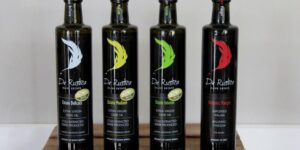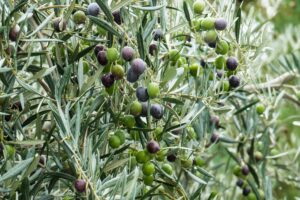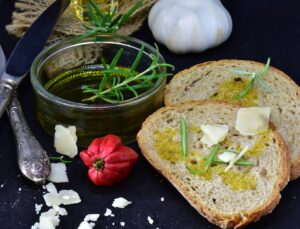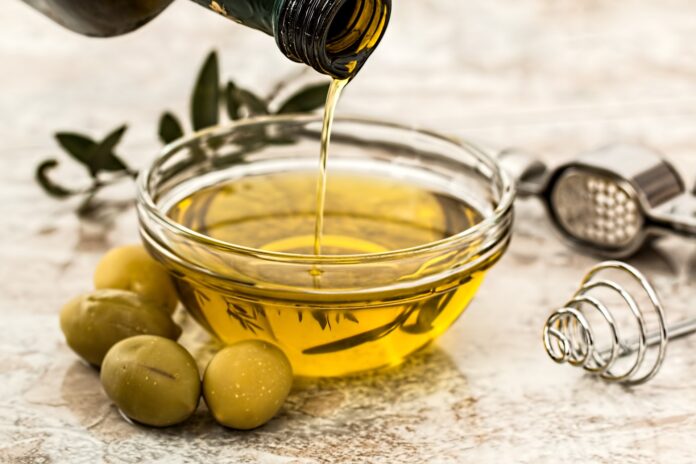Most individuals can easily distinguish a good tomato from a subpar one, but the qualities that define excellent olive oil, a staple in many of our daily diets, remain somewhat mysterious. Enter Pompeian, Amazon’s top-selling extra-virgin olive oil, retailing at a mere R4.33 per 30ml it’s the culinary equivalent of a box wine. If you frequent any major supermarket, chances are you’ve encountered a commodity extra-virgin olive oil like Pompeian. While this doesn’t inherently mean it’s inferior, it does underscore the importance of understanding what you’re purchasing.
In the complex global olive oil trade, large-scale commodity olive oil companies procure oils from various sources and blend them to create a uniform product. These intermediary brokers purchase oils from regional producers, who, in turn, acquire harvests from numerous small farms. Consequently, a three-litre tin of commodity extra-virgin olive oil could potentially contain oils from thousands of orchards. While this might seem fascinating, it also multiplies the opportunities for errors in processing or mishandling, assuming, of course, that the oil is genuinely pure and not adulterated with other refined fats.
Numerous olive oil brands proudly proclaim to be “imported from Italy,” suggesting that the oil inside the bottle originates from Italy. However, a closer inspection of the fine print on the label often reveals a disclaimer: “Contains oil from one or more of these countries,” accompanied by a legend to decipher the country codes on the bottle.
Regrettably, some brands operate less transparently. The olive oil industry has faced notorious cases of fraud, with some entities mixing Italian oils with those from other nations and marketing the blend as pure Italian oil. Moreover, companies sometimes dilute genuine extra-virgin olive oil with tasteless soybean or safflower oils or blend in oil made from older olives that has undergone just enough refining to render it palatable. A 2014 congressional report on adulterated foods, including olive oil, delves into these deceptive practices.
Fraud aside, even 100% pure extra-virgin olive oil can degrade over time. If stored improperly or left on a supermarket shelf for an extended period, it can turn rancid before you have a chance to open it. Regulations exist to combat these issues, but enforcement is often lax. In the olive oil industry, profit and yield frequently take precedence over quality.
Identifying Exceptional Olive Oil

Then there’s the minority – small-batch boutique olive oils crafted by skilled producers worldwide, sourced either directly from their own olive orchards or nearby suppliers. If Pompeian is the box-wine of olive oil, these specialty brands represent the Champagnes of the olive oil world. They exude intensity and complexity, with a vibrant olive flavour and a strong sense of terroir. These are, in theory, the pinnacle of good olive oils. However, expect to pay between R25 and R40 per 30ml for these bottles, reflecting not just the superior quality of the olives but also the increased expenses associated with artisanal food production, including labour, manufacturing, and distribution. Nevertheless, there’s no guarantee that a R700 bottle of olive oil will be exceptional, or that you’ll appreciate its particular characteristics. Like any speciality food, the relationship between price and value becomes intricate at the premium end of the olive oil spectrum.
Much like in the wine industry, numerous South African companies now produce high-quality olive oil and fortunately, this is priced significantly cheaper than international brands of the same standard. Last year’s SA Olive Awards awarded 25 gold medals in three separate categories: Delicate, Medium and Intense and many more silvers (see the full list of golds at the end of the article).
How is it made?

When it comes to cold-pressed olive oil, the name says it all: it’s all about the olives being gently crushed and ground into a rich, oily juice, using mechanical pressure alone. Roughly 20% of an olive’s fresh weight comprises oil. However, it’s crucial to understand that the oil itself is essentially devoid of any distinct flavour. To unlock the true essence of the olive’s taste, you need to rupture the tiny oil sacs nestled within the fruit, allowing the fats to mingle with the flavorful skin, flesh, and seed. The challenge, however, is that while the oil is exposed to air it oxidised – enzymatic activity that is slowly spoiling the oil. Producers therefore use many methods to try and slow this process from storing it in dark, airtight containers to even flushing nitrogen into the steel storage tanks. This process can never truly be stopped, however, which is why even the best olive oils degrade completely after three years.
Understanding Olive Oil Grades: Extra-Virgin vs. Virgin
Extra-virgin olive oil is generally defined as 100% cold-pressed olive oil with a maximum acidity level of 0.8% and no sensory defects. The next grade down is virgin olive oil, which allows for up to 2.5% acidity with minor defects. Below these categories lie various lower-quality grades that require heat and/or chemical refinement to become palatable – constituting the bulk of the commodity olive oil market.
While acidity, along with numerous other critical factors such as peroxide counts and signs of pests or disease, can be measured in a lab, detecting sensory defects relies on a panel of experts trained to identify flaws like rancidity, barnyard or alcohol notes, and ‘fustiness,’ an indication of fermentation. An olive oil that exhibits no flavour defects and passes chemical analyses like acidity tests can be labelled as extra-virgin. However, a passing grade merely indicates that it didn’t fail. It could be a D. An oil that lacks manufacturing defects may still taste insipid, unbalanced, or simply unenjoyable, yet it can earn the same grade as an award-winning bottle. This approach is arguably more practical than a complex, subjective point-based scoring system, but it does raise the concern that the grades assigned by a tasting panel may not necessarily reflect the oil’s quality when you open the bottle.
Harvest Year, Bottling Date, and Shelf Life

Because of the constantly degrading nature of olive oil chefs would be advised not to stow it away in the back of a cupboard. Utilize it while it’s fresh, vibrant, and delightful – it’s not a collector’s item. One of the most critical pieces of advice is to search for oils with best-by dates as distant as possible. Some small speciality producers may include harvest dates on their bottles, but larger companies that work with multiple lots and orchards, as well as the commodity giants, generally rely on bottling dates. In the EU, the best-by date is usually 18 months from the bottling date, while in the US, it’s closer to two or three years.
Although a far-off best-by date doesn’t guarantee that the oil has been handled impeccably throughout the supply chain, it at least increases the likelihood that the oil in the bottle isn’t excessively aged. Dark bottles are more resistant to heat and light degradation than clear ones, and although smaller bottles may cost more per ounce than three-litre tins, they are generally preferable. Once you open the bottle and expose the oil to air, it will deteriorate even more rapidly. Unless you frequently prepare large batches of food, you likely won’t finish a substantial tin of olive oil before any flaws become noticeable.
Some producers have begun to include polyphenol counts on their bottles, which range from 150-200 on the lower end up to 600 or more. Higher polyphenol counts generally correspond to oils with a longer shelf life, although some may find the bitter, pungent taste associated with exceptionally high counts unpalatable.
All of this prompts the thought that finding a bottle of high-quality olive oil is akin to selecting a tomato, after all. Purchase from trustworthy sources, seek out freshness, avoid relying solely on fancy branding, and trust your instincts – it encompasses far more than the label “extra-virgin” implies.
17th annual SA Olive Award Gold Winners
Gold delicate
- De Rustica – Estate Delicate.
- Lions Creek Olive Estate – Lions Creek Frantoio EVOO.
- Rio Largo Olive Estate – Rio Largo Gold (Gold).
- The Greenleaf Olive Company – Food Lover’s Signature South African EVOO.
- The Greenleaf Olive Company – River Press EVOO.
- Porterville – Andante Delicate.
Gold medium
- Chaloner – The Peregrine Limited Edition.
- Darling Olives – Darling Olives Estate Limited Blend EVOO.
- De Rustica – Collection: Coratina.
- De Rustica – Estate Medium.
- Die Klip Huis – Die Klip Huis.
- Galenia Estate – Mission.
- Het Vlock Casteel – Het Vlock Casteel Favolosa.
- Mardouw – Mardouw Oil of the Olive Medium.
- Mardouw – Mardoux XXV Medium.
- Morgenster – Don Carlo Extra Virgin Olive Oil.
- Morgenster – Morgenster EVOO.
- Oudewerfskloof Olive Farm – OWK Picual.
- Porterville – Andante Intenso.
- Zoetigheyd Farms – Zoetigheyd Premium Frantoio.
Read more about International Plant Day here.
Gold intense
- Altevrede – Favolosa.
- Mardouw – Mardouw Oil of the Olive Favolosa.
- Mardouw – Mardouw XXV Intense.
- Oudewerfskloof Olive Farm – OWK – Favolosa.
- Porterville – Andante Forte.


